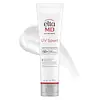What's inside
What's inside
 Key Ingredients
Key Ingredients

 Benefits
Benefits

 Concerns
Concerns

 Ingredients Side-by-side
Ingredients Side-by-side

Water
Skin ConditioningDiethylamino Hydroxybenzoyl Hexyl Benzoate
UV FilterEthylhexyl Methoxycinnamate
UV AbsorberBis-Ethylhexyloxyphenol Methoxyphenyl Triazine
Skin ConditioningC12-15 Alkyl Benzoate
AntimicrobialDibutyl Adipate
EmollientDicaprylyl Carbonate
EmollientPentylene Glycol
Skin ConditioningMethylene Bis-Benzotriazolyl Tetramethylbutylphenol
UV FilterDimethicone
EmollientEthylhexyl Triazone
UV AbsorberAlcohol
AntimicrobialCetyl Phosphate
EmulsifyingGlycerin
HumectantCetyl Alcohol
EmollientTriethanolamine
BufferingPanthenol
Skin ConditioningTocopherol
AntioxidantLecithin
EmollientDecyl Glucoside
CleansingCarbomer
Emulsion StabilisingPropylene Glycol
HumectantXanthan Gum
EmulsifyingBHT
AntioxidantAloe Barbadensis Leaf Juice Powder
Skin ConditioningWater, Diethylamino Hydroxybenzoyl Hexyl Benzoate, Ethylhexyl Methoxycinnamate, Bis-Ethylhexyloxyphenol Methoxyphenyl Triazine, C12-15 Alkyl Benzoate, Dibutyl Adipate, Dicaprylyl Carbonate, Pentylene Glycol, Methylene Bis-Benzotriazolyl Tetramethylbutylphenol, Dimethicone, Ethylhexyl Triazone, Alcohol, Cetyl Phosphate, Glycerin, Cetyl Alcohol, Triethanolamine, Panthenol, Tocopherol, Lecithin, Decyl Glucoside, Carbomer, Propylene Glycol, Xanthan Gum, BHT, Aloe Barbadensis Leaf Juice Powder
Zinc Oxide 9%
Cosmetic ColorantEthylhexyl Methoxycinnamate 7.5%
UV AbsorberEthylhexyl Salicylate 5%
UV AbsorberWater
Skin ConditioningIsopropyl Palmitate
EmollientOctyldodecyl Neopentanoate
EmollientCetyl PEG/PPG-10/1 Dimethicone
EmulsifyingHexyl Laurate
EmollientPolyglyceryl-4 Isostearate
EmulsifyingCetyl Dimethicone
EmollientSodium Chloride
MaskingBeeswax
Emulsion StabilisingHydrogenated Castor Oil
EmollientTriethoxycaprylylsilane
Disodium EDTA
Butylene Glycol
HumectantTocopheryl Acetate
AntioxidantIodopropynyl Butylcarbamate
PreservativeZinc Oxide 9%, Ethylhexyl Methoxycinnamate 7.5%, Ethylhexyl Salicylate 5%, Water, Isopropyl Palmitate, Octyldodecyl Neopentanoate, Cetyl PEG/PPG-10/1 Dimethicone, Hexyl Laurate, Polyglyceryl-4 Isostearate, Cetyl Dimethicone, Sodium Chloride, Beeswax, Hydrogenated Castor Oil, Triethoxycaprylylsilane, Disodium EDTA, Butylene Glycol, Tocopheryl Acetate, Iodopropynyl Butylcarbamate
Ingredients Explained
These ingredients are found in both products.
Ingredients higher up in an ingredient list are typically present in a larger amount.
Ethylhexyl Methoxycinnamate is an organic compound that provides UVB protection. It often goes by the more common name of octinoxate. It is created from methoxycinnamic acid and 2-ethylhexanol.
Ethylhexyl Methoxycinnamate absorbs UVB rays with wavelengths between 280-320 nm. UV absorbers protect your skin by using chemical reactions to convert UV rays into heat and energy.
UVB (290-320 nm) rays emit more energy than UVA rays. They are capable of damaging DNA, causing sunburns and are thought to be linked to skin cancer.
The state of Hawaii has banned sunscreens containing octinoxate due to its potential impact on coral reefs. More research is needed to bridge gaps in this research. The European Union allows higher levels of octinoxate in sunscreens than the US and Australia.
Ethylhexyl Methoxycinnamate is oil soluble. It is not stable and may lose efficacy when exposed to sunlight.
Learn more about Ethylhexyl MethoxycinnamateWater. It's the most common cosmetic ingredient of all. You'll usually see it at the top of ingredient lists, meaning that it makes up the largest part of the product.
So why is it so popular? Water most often acts as a solvent - this means that it helps dissolve other ingredients into the formulation.
You'll also recognize water as that liquid we all need to stay alive. If you see this, drink a glass of water. Stay hydrated!
Learn more about Water